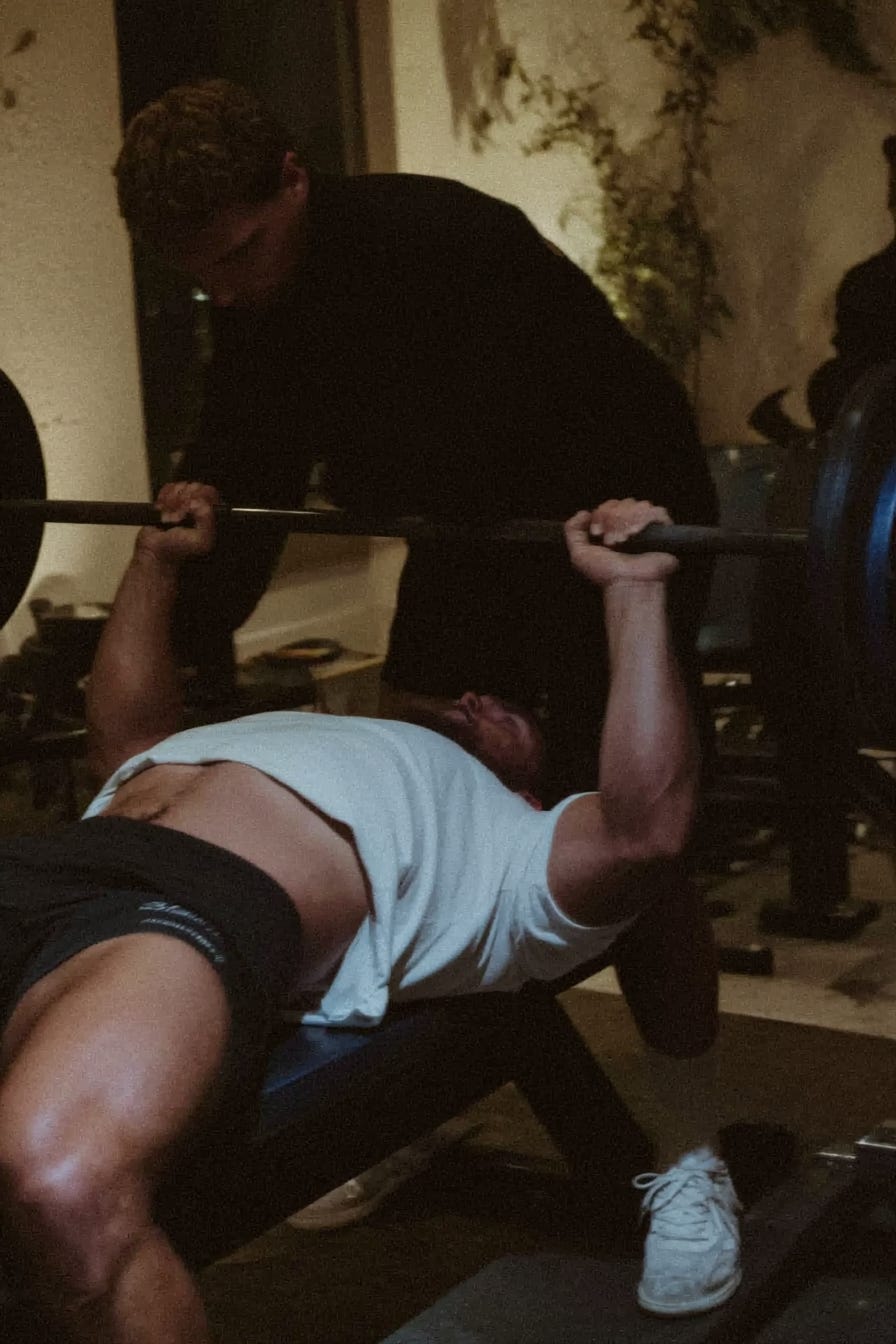Low-Load High-Volume vs High-Load Low Volume Bench Press Protocols
What's the impact on functional and structural adaptations in powerlifters?
Do you really need to lift the heaviest weights possible to get stronger, or could lighter weights with higher repetitions give you the same results? This study challenges the traditional “go heavy or go home” approach by comparing low-load, high-volume training versus traditional heavy, low-volume protocols in powerlifters, and the results were pretty interesting.
Key Points
Overview
This research investigated the effectiveness of low-load high-volume (LL-HV) resistance training compared to traditional high-load low-volume (HL-LV) protocols in promoting functional and structural adaptations in powerlifters. Twenty-six well-trained male powerlifters participated in a 12-week supervised training intervention where they were randomly assigned to either the LL-HV group (performing initial bench press sets at 45-60% of one-repetition maximum with very high repetitions) or the HL-LV group (performing initial sets at 75-90% of 1RM following traditional powerlifting protocols).
Aim
The primary objective was to evaluate whether low-load high-volume bench press protocols could produce comparable improvements in maximal strength, mean velocity at submaximal loads, and muscle size compared to traditional high-load low-volume approaches in experienced powerlifters. The researchers hypothesised that LL-HV training would yield improvements comparable to HL-LV across all measured parameters.
Methods
The study employed a randomised controlled design with 26 trained male powerlifters who had at least two years of bench press experience and one year of consistent training using repetitions in reserve (RIR) to gauge effort. Participants were randomly allocated to either LL-HV or HL-LV groups using computer-generated randomisation.
Both groups followed identical training protocols except for the initial bench press set. The LL-HV group performed their first set at 45% of 1RM in session 1 and 60% of 1RM in session 2, while the HL-LV group performed at 75% and 90% of 1RM, respectively. All other exercises and training volumes were matched between groups, with participants training twice-weekly for 12 weeks.
Key measurements included bench press 1RM, mean velocity at various submaximal loads (80%, 85%, 90%, and 95% of 1RM), Wilks coefficient and IPF-GL points for relative strength assessment, and arm and chest circumferences for structural adaptations. All participants performed repetitions with maximal intended velocity and trained to the same level of exertion based on RIR.
Results
The findings revealed that both training methods produced significant improvements, with some notable advantages for the LL-HV approach. For mean velocity improvements, the LL-HV group demonstrated significant advantages at 80% of 1RM, showing a 16.2% improvement compared to only 0.9% in the HL-LV group. Both groups achieved substantial improvements in maximum strength (1RM), with the LL-HV group showing an 8.4% increase versus 2.2% for the HL-LV group, though this difference was not statistically significant.
Regarding structural adaptations, the LL-HV group exhibited significant increases in arm circumference (3.2% improvement) compared to essentially no change in the HL-LV group (-0.1%). Both groups showed improvements in chest circumference, with the LL-HV group achieving 2.3% growth versus 0.7% for the HL-LV group. Relative strength measures (Wilks coefficient and IPF-GL points) showed trends toward greater improvement in the LL-HV group, though these differences were not statistically significant.
Practical Takeaways
For Powerlifters and Strength Athletes:
Low-load, high-volume training can be equally effective as traditional heavy training for building maximum strength, offering an alternative training strategy
Starting workouts with lighter weights (45-60% of 1RM) performed with high repetitions and maximal intended velocity can produce significant strength gains
This approach may be particularly beneficial for enhancing speed and power at submaximal loads, which could translate to better competition performance
For General Fitness Goers:
Higher repetition training with lighter loads can produce meaningful muscle growth and strength improvements, making it accessible for those intimidated by heavy weights
The key factor is training with maximal effort and intention, regardless of the load used
This approach may reduce injury risk while still delivering excellent results
Programming Considerations:
Incorporate periodisation that alternates between different loading schemes throughout training cycles
Focus on maintaining maximal intended velocity during all repetitions, regardless of load
Use repetitions in reserve (RIR) to ensure consistent effort levels across different loading protocols
Other Considerations
While the study demonstrates that lighter loads can produce similar strength gains to heavy training, the principle of specificity remains crucial for optimal strength expression. Heavy lifting is still essential when the goal is to express maximal strength because strength is fundamentally a skill-specific adaptation. Neural adaptations to strength training are highly specific to the loads, movement patterns, and velocities trained.
The research shows that while low-load training can build strength capacity, heavy loads create distinct neurological adaptations, including enhanced motor unit recruitment patterns, improved intermuscular coordination, and increased neural drive at high intensities. These adaptations are critical for maximal strength expression under competition conditions, where athletes must demonstrate their peak performance capabilities.
Additionally, practising lifting heavy weights develops the psychological and technical skills necessary for handling maximal loads, including proper bracing, timing, and confidence under extreme loading conditions. Therefore, while diverse loading strategies offer valuable training benefits, the specificity principle dictates that athletes must still practice their sport-specific demands to optimise competitive performance.










